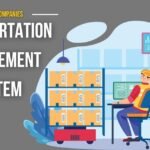What does IEP stand for?
IEP stands for Intermodal Equipment Provider in the logistics field. An IEP supplies intermodal equipment to motor carriers. They play a vital role in logistics and transportation systems. Intermodal equipment includes containers, chassis, and sometimes trailers. This equipment aids in efficient cargo movement on highways.
IEPs ensure equipment availability for seamless supply chain operations. Their role helps streamline shipping and transportation processes. By providing necessary equipment, IEPs enhance supply chain efficiency.
Equipment availability from IEPs supports consistent logistics and commerce flow. 49 CFR Section 390.40 regulates IEP responsibilities. Understanding IEPs is crucial for logistics students and professionals.
In this post we will learn in detail about What is IEP in Logistics?
The Concept of Intermodal Transportation
What is intermodal transportation?
Intermodal transportation involves using multiple modes to move goods efficiently. It typically uses trucks, rail, and ships in a unified supply chain. Intermodal transport effectively leverages the strengths of each mode. Trucks provide the flexibility to pick up containers from any location, and rail transportation offers an energy-efficient way to move goods long distances.
Ships transport huge volumes of cargo across international waterways. The goal of intermodal transportation is to optimize the supply chain process. An IEP is an essential component in intermodal logistics systems.
They ensure the availability and readiness of equipment like chassis and containers. IEPs play a crucial role in maintaining transportation efficiency and safety. By managing equipment, IEPs support seamless intermodal transport operations.
Key Responsibilities of an IEP
Equipment Provisioning
An IEP provides the necessary chassis, trailers, and containers for efficient shipping. It also ensures equipment availability to support smooth logistics and transportation operations. Provisioning high-quality equipment helps maintain seamless supply chain activities.
Maintenance and Repairs
IEPs perform regular maintenance on their equipment to prevent breakdowns during transport. They repair equipment promptly, addressing any issues that might compromise safety. An IEP should comply with all safety standards and regulatory requirements.
Collaboration with Carriers and Terminals
IEPs work closely with carriers to coordinate equipment pick-up and drop-off. They communicate effectively with terminals to ensure timely equipment transfers. Through active collaboration, IEPs facilitate smooth transitions between different transport modes.
IEP and Industry Regulations
Federal Motor Carrier Safety Administration (FMCSA) Regulations
The FMCSA sets essential rules for the safe operation of commercial vehicles. These regulations ensure equipment meets standards and reduce transport accidents on highways. IEPs must comply with FMCSA requirements for road safety and vehicle inspection.
International Maritime Organization (IMO) Regulations
The IMO creates regulations for safe ocean transportation and environmental protection standards. IEPs should align with these guidelines to avoid maritime accidents and pollution incidents. Meeting IMO regulations ensures reliable equipment for safe and efficient maritime transport operations.
IEP’s Compliance Obligations
IEPs must follow industry regulations in all logistical activities. They must check that equipment follows safety standards for every journey and task. Regular assessments guarantee their equipment’s safety and compliance with regulations.
Inspection Protocols and Safety Checks
IEPs conduct inspections to verify safe and proper equipment functioning before transportation. Safety checks involve examining components to avoid any hazardous issues during transit. Effective inspection protocols enhance safe operations and minimize equipment-related breakdowns.
Benefits of IEPs in Logistics

Enhanced Efficiency
IEPs streamline operations by supplying essential equipment for various transportation modes. Equipment availability ensures quicker cargo handling and reduced delays in logistics operations. IEPs improve efficiency by coordinating equipment use across different logistical networks. Working with IEPs, carriers can effectively manage and optimize transportation schedules.
Cost-Effectiveness
IEPs reduce operational costs for carriers by providing readily available intermodal equipment. Carriers save money by not investing in expensive equipment purchasing or maintenance. With IEPs, carriers focus on logistic operations without worrying about equipment availability. Cost savings lead to competitive pricing and improved service offerings for clients.
Improved Accountability
IEPs are responsible for equipment management, ensuring clear roles and expectations. Defined responsibilities enhance the efficiency and reliability of logistics operations. IEPs maintain equipment standards, holding themselves accountable for safe and efficient use. Accountability helps identify and resolve equipment-related issues promptly, enhancing operations.
Future Trends in IEPs and Logistics
Technological Innovations
Predictive maintenance uses data analytics to foresee equipment problems before they happen. This technology reduces unexpected breakdowns, improving logistics efficiency and equipment uptime. Blockchain technology enhances tracking and transparency in intermodal equipment management systems.
It secures information flow, ensuring accurate records of equipment use and conditions. IoT-enabled equipment offers real-time data sharing for improved logistics operations and efficiency. During various logistical processes, these devices track equipment status, location, and condition.
Sustainability Initiatives
IEPs focus on eco-friendly equipment to minimize environmental impact in logistics operations. They are designing chassis and containers that reduce carbon emissions during transportation activities.
Such equipment uses sustainable materials, promoting greener logistics practices and operations. Using renewable energy sources, IEPs contribute to transformations in the eco-friendly logistics industry. Companies benefit by aligning operations with global environmental goals and regulations.
Globalization Impact
Global connectivity expands the roles of IEPs in international logistics networks and operations. IEPs efficiently ensure equipment availability for simultaneous global transportation activities.
New global routes demand strategic equipment distribution for seamless logistics experiences. IEPs streamline operations, managing equipment for diverse logistics partners worldwide. They enhance international shipment reliability, supporting growing global trade and supply chains.
Case Studies or Examples
Example of a Successful IEP-Managed Intermodal Operation
A leading IEP streamlined operations for a large retail company’s logistics network. Through coordinated equipment use, the IEP reduced delays significantly and improved efficiency. Predictive maintenance technology minimized breakdowns and maintained high uptime during transportation activities.
The IEP’s efforts led to increased customer satisfaction and helped the retailer’s profitability. Effective equipment management ensured timely deliveries and allowed the retail company to expand operations.
Leading Companies Overview of Major IEPs in the Industry
Major IEPs like J.B. Hunt Transport Services offer excellent equipment management and logistics solutions. FlexiVan provides effective intermodal equipment leasing services to diverse logistics partners worldwide.
It ensures reliable equipment availability for continuous operations in global transportation networks. DCLI (Direct ChassisLink, Inc.) focuses on innovative solutions to enhance logistics and supply chain efficiency. These companies set industry standards by offering sustainable and efficient equipment management practices.
Conclusion
IEPs are crucial in modern logistics, ensuring efficient intermodal transportation operations. Their contribution to logistical safety and reliability is significant and highly beneficial.
IEPs provide timely equipment supply, reducing delays and optimizing transport schedules effectively. They maintain high safety standards, ensuring the secure transport of goods across different regions. By managing equipment efficiently, IEPs enhance logistics operations’ overall performance and success.
FAQ’s
What is the meaning of intermodal equipment?
Intermodal equipment, which includes containers, chassis, and trailers, helps move cargo using different transportation modes. It easily switches between trucks, trains, and ships, boosting efficiency and cutting costs. Intermodal equipment enables seamless and flexible logistical operations.
What is piggyback in logistics?
Piggyback is a transportation technique using combined modes. It involves carrying trailers on train flatcars. Trucks deliver the trailer to the train terminal, and trains transport it long distances. This method saves fuel, time, and logistics costs.
What is an intermodal example?
Shipping containers moving between ships, trains, and trucks is a prime intermodal example. Goods are loaded into containers at the start point, and the containers remain sealed during transport. Each mode shift occurs without unloading goods until final delivery.












